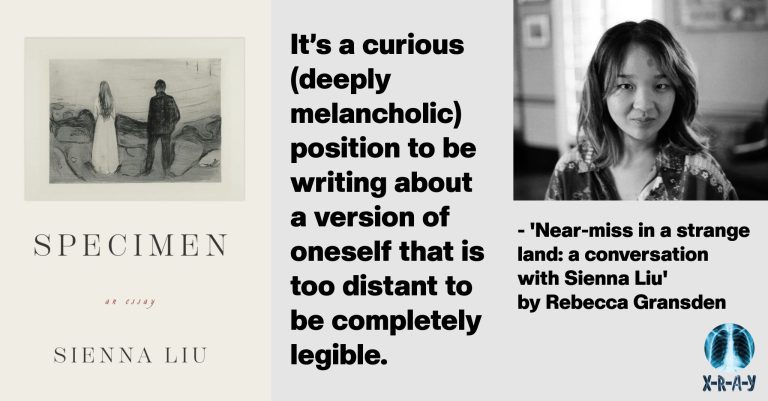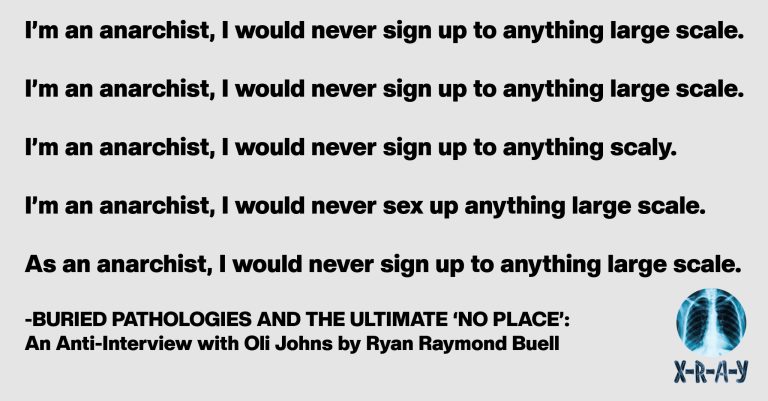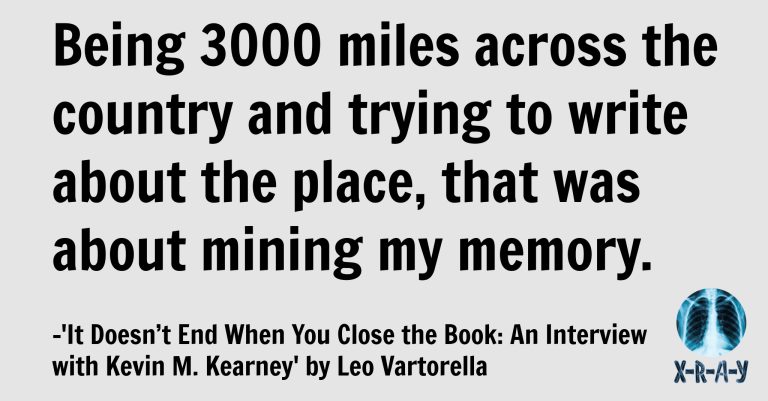
NEAR-MISS IN A STRANGE LAND: A CONVERSATION WITH SIENNA LIU by Rebecca Gransden
Sienna Liu’s Specimen (Split/Lip Press, 2025) seeks to articulate the ineffable facets of desire. A fragmentary and lyrical hindsight finds lovers in an entanglement as fragile as it is seemingly unwise. Not only an interrogation of memoir, of the compulsion to write other people onto the page, but a probing commentary on the price and rewards of setting out on such a task. When we look back, what do we ask of those who reach out in memory? I spoke to the author about this plaintive and dissecting book. Rebecca Gransden: When did you set out upon writing Specimen? What length of time had elapsed between when the events of the book took place and putting them down on the page?Sienna Liu: I started writing Specimen in February 2023, about ten years after the events in the book took place.RG: I met someone at a party; something about him reminded me of E. I hadn’t thought about E. for a very long time. Too long, so that when I saw this faint replica, it felt as if a complete stranger had caught up with me on a street and started to tell me a secret about myself. We see echoes of others in people. Were there echoes that brought about your decision to write the book? What made you decide to write about this time and these events?SL: Exactly! It happened just like I described—I was at a party one day in February 2023, and met someone there who reminded me of E., a lot. I do tend to find echoes of others in people, but up till then I had not really encountered a true doppelgänger of E., who I had for the longest time thought to be one of a kind. I’ve also thought about writing about E. so many times but was never able to start. But finally meeting someone who was that reminiscent of E. felt like a writing prompt: now, go write. I left that party and started writing the first vignette as soon as I got home.RG: How did you decide upon the title for the book?SL: I can’t remember the precise moment, but at some point I realized I used / would use the word specimen in the book a few times, in different contexts with different meanings (“a specimen of human folly” / butterfly specimens). It seemed to be a great title for this project because a specimen is a thing that is artificially frozen in time (a recollection), and a singularity that also generalizes (which calls for an examination).RG: A theme in the book that stands out to me is that of the gulf between what we project and what is understood, what we transmit and receive, the gaps we leave, both consciously and unconsciously. Are there gaps to be found in what you intended for the book and how it turned out?SL: That’s such an acute observation, and an interesting question! Rather than gaps, to me the writing of the book shows how much perspectives can shift (i.e. how we can learn to acquire different eyes, how we can pick up a loving gaze). I had wanted the book to be on the colder side, and thought that was how it was executed, until very recently I realized how heartfelt it actually is. One of my best friends noticed that too: he read an early draft of this manuscript and told me it hurts because of its sharpness. Two years later, he read it again and told me this time it hurts because of its tenderness. I did not think I intended that tenderness, but it somehow came out in the writing.RG: How do you invoke a sense of place. To what extent does place feed into the direction of the book?SL: Places in this book are the center stage for disappearances (or absences). (“I was never there. Because he was never there. That city was forever defined by his absence.”) The book was organized into four parts, and each part, originally, had a title that was the name of a city. The whole thing was supposed to feel like a chase—a futile pursuit. A chase around the globe for a person or a phantom that was forever unattainable. She looked around and noticed things only because he wasn’t there. He wasn’t there—and that enabled her to live, only she didn’t know it at the time.RG: I often thought about the fact that he introduced himself to me in symbols (the Tarot cards, the music he chose to play, the Yuxi (玉 溪) he smoked, the Bombay Sapphire he drank, as if it could only be this way). Literary and mythological vignettes. Symbols, fragments. Digestible bite-sized illusions. He recognized this too. Later on he said, “I was too broken when I first met you.” The book’s relationship to symbols is multifaceted, at once divining and obscuring, especially in relation to the attempt at knowing another person. What was your approach to the symbolic for Specimen?SL: It’s interesting—when you say “the symbolic” I think of the Symbolic of Jacques Lacan, the order of language and laws. According to Lacan, the symbolic is made possible because of our acceptance of the Name-of-the-Father, those laws that control both our desires and the rules of communication. In other words, the symbolic is both enabling and limiting. In Specimen, too, though it’s not quite the same thing, the symbols that float about both enable interpretation and limit imagination—they usurp the image of the other person, but their existence also enables the desire in the first place.RG: A dominant theme of the book is that of time. Specimen explores the limits of looking back on events from a distance, and poses questions on what stays with us, what part of the act of recollection can be trusted. At the conceptual stage, did this theme impact your decision on how to approach form and style for the book?SL: Definitely—it’s a curious (deeply melancholic) position to be writing about a version of oneself that is too distant to be completely legible. In an earlier draft of the book I discussed this dilemma more expressly: There’s nothing more alienating than standing face to face with your former self. That absolute distance—any exchange is doomed to be one-way. That’s why the “I” I’m using now is entirely fictional, and reading this lifeless record is the same thing as mourning, because those two people who had been talking to each other incessantly—and their incessant oscillations and fears and little defeats in life—no longer exist. RG: How do you view Specimen’s relationship to both memoir and fiction? Do you draw a firm line between reportage and narrative, or do boundaries blur? What is your approach to the tensions between these elements?SL: I’m glad you asked this question, because for a while I wasn’t sure whether Specimen was a novella or a short memoir. I didn’t quite decide which one until very late in the process, but to me that distinction didn’t matter as much. It had always been my goal to only speak my personal truth, to do my best to reconstruct and interrogate that part of my history, and to do all of that with full sincerity. In the end I chose to call it non-fiction, but it could very well have been labelled a novella. RG: Do you keep a journal, use notebooks? If so, has this practice impacted Specimen?SL: I kept a handwritten journal at various points in my life, but never did it consistently—and I lost most of those hand-written records after moving countries several times in the past decade. I do keep a lot of notes on my iPhone and still have them to this day. When I was writing Specimen, I mostly looked through those digital notes and text messages and chats on other instant messaging platforms, which helped me reconstruct the timeline and more importantly, what I was feeling back then. In that sense Specimen is a book by and for the first generation, I think, who recorded their youth through digital means.RG: I thought about this thing I once read somewhere: a writer is trying to write about an amorous affair in her youth. She could only do it in fragments and vignettes because she perceives no continuity in that passion. She writes down scenes, dialogues, traces of a memory, on index cards. She puts those cards into drawers, into various books as bookmarks. Years later, after moving and rearranging things and getting rid of things, she realizes all the cards have disappeared or disintegrated. What’s more, she no longer retains one single line from that great passion. What place does passion have in the book?SL: It very much is the book! I think I was only able to write it because of how blazing, gazing it all felt—how violent, almost, as it occurred, that obscured a lot of other things. I once had a conversation with Marie Darrieussecq about passion and love, and she said, “Love is common, trivial, ‘small’, not huge nor scary, love is on a day to day basis, love is regular when passion is intense and deadly. Love helps you to live, passion prevents you from living.” And I could not have put it better. Passion prevents you from living, but it often enables your writing.RG: Several dreams are recounted in the book. Do you dream about Specimen? SL: Dreams mean a lot to me. I tend to have vivid but mythical dreams that have no basis in reality (or so it seems to me). I do keep a log of them that I call my “dream log”—might become a book one day. I don’t dream about Specimen in any literal sense, but the book lives in a kind of dreamscape for me. Writing it felt like navigating a landscape where memory, desire, and uncertainty blur together—much like a dream. RG: I was never there. For instance, I would be making dinner with Nathalie, and she would ask me about my day. “Pas mal,” I said. There was nothing more I could add. In my philosophy class, I could faithfully transcribe everything on time and eternity and the essence of things, but back into the small kitchen in the fifteenth arrondissement, back to the day-to-day, I couldn’t speak a word about how I really felt about anything. A sense of melancholy detachment hangs over the book. Do you consider Specimen as capturing a particularly modern malaise?SL: Yes, I think so, not in the sense of diagnosing a generation, but in inhabiting a kind of quiet, persistent dislocation. It’s the feeling of being “at once myself and not myself.” The body is present, the gestures habitual, but the self is elsewhere, numbed or abstracted by the unsayable. We live in a time where we are inundated with language—surplus language, even—and yet the ability to translate ourselves to others often slips away from us. In a way the melancholy isn’t personal or generational; it’s structural—baked into how we live, how we love, how we try and often fail to connect.RG: A few weeks later I saw a painting at the Fondation Louis Vuitton, a painting by Edvard Munch called “Two Human Beings: The Lonely Ones.” A man and a woman had their back to us. The woman had long blonde hair. She wore a luminous white dress. The man was in a dark suit, a step behind the woman, with one of his legs stretching towards her, as if he were hesitating whether he should take that step. Something about this image of frozen uncertainty made me think of E., and about what is ever possible between two human beings, especially the lonely ones. I thought about us sitting on the floor of his room facing a big loaf of country bread as hard as rock, imitating the silence of the gods, and how I had felt that finally, I was beginning to know him. Another few years later, I saw this exhibition again in New York. This time I just felt sad. Edvard Munch’s Two Human Beings. The Lonely Ones (1894) features on the cover, and is mentioned in the book itself. How did you decide to use this as the cover image?SL: When I first saw that Munch painting in Paris (around the time when E. first broke my heart), I was struck by the space between the figures: it was not dramatic, not hostile, just… irresolvable. They’re close enough to touch, and yet they don’t. That distance—tender, painful, suspended—was exactly how it had felt with E. and how it had felt, writing Specimen. The painting suggests a kind of companionship shaped by silence, by what is withheld rather than expressed. It also evokes the strangeness of time: how people can drift through years beside each other and still remain, in some essential way, unknown. The image holds a tension I wanted the reader to feel before reading a single word.RG: Specimen is littered with references to literature, the use of excerpts, mention of works of art. What writers or artists, if any, do you consider as an influence? Are there works with an affinity to Specimen?SL: Around the time I was writing Specimen I was obsessed with Annie Ernaux (aren’t we all), so I definitely see the influences of, say, Simple Passion, or, A Girl’s Story. I thought about Natalia Ginzburg’s work a lot too. And I have completely forgotten about it until now, but around the time I finished Specimen, a friend of mine recommended Maggie Nelson’s Bluets to me, and I had said to him, this really reminds me of something I’ve been working on! RG: I found Specimen to be a form of spiritual and psychological archaeology, searching for applied meaning in fragments. Do you continue to analyse the book in retrospect? SL: That’s a beautiful question, and it touches on something essential about how Specimen was written. I did interpret the material closely as I was writing. The process was reflective, even analytical at times, but once the book was finished, I didn’t feel the need to keep revisiting it. I don’t return to it to extract further meaning. I trust what it became in the moment of making. Now, I’m more interested in how others read it. RG: A consistent theme is that of how much life is driven by miscommunications, how the quest for connection is at once imbued with the potentially impossible, absurd and joyful. Do you view the book as an act of connection? Has the book changed you?SL: Yes, I do think the book is, in some way, an act of connection, but maybe a paradoxical one. So much of Specimen is about the near-miss: people circling each other, reaching, misunderstanding, saying almost but not quite what they mean. I wanted to write into that space of near-miss, not to resolve it, but to give it form. So while the book acknowledges how difficult and often absurd real connection can be, the writing itself was a way of trying, of saying: this is how it felt, even if I couldn’t really say it in the moment. Whether that counts as connection or just the desire for it, I’m not sure, but the gesture matters to me.RG: Specimen is released by Split/Lip Press. What attracted you to work with them and how have you found that process?SL: I love independent presses and Split/Lip Press has always been one of my favorites. Last year, when I saw they were looking for non-fiction manuscripts, I submitted Specimen and that’s how it all began. And I couldn’t have found a better home for it. The whole team showed so much love and care and true understanding during the entire process of editing / designing / marketing. I felt very lucky and honored to be part of the Split/Lip family.RG: What were your dominant feelings upon completion of the book? And how do you reflect on Specimen, and your time writing it?SL: It’s odd, but it felt as if I had traveled through some distant, strange land, where I met some lovely people, had a great time, but eventually I had to return (had to!), and it was a little bit like that little boy Nils in The Wonderful Adventures of Nils. After he traveled all across Sweden on the back of a goose, he returned to his parents and said: Maman, papa, je suis grand et je suis de nouveau un homme! (I don’t know why but it’s always the French version that I remember—essentially he said, Mom, Dad, I’m big and I’m again a man!) It’s strange, but writing the book was like traveling on the back of a goose through a distant land, where I met all the best people I knew during my youth, and somehow I was meeting them for the first time as a real adult. RG: What is next for you?SL: I’m not completely sure yet. For the past few months I’ve been working on a millennial novel about a group of young professionals and expats in New York city, but I’m now moving away from that and will perhaps work on something more abstract, such as the “dream log” I mentioned. We’ll see!
Read More » 








